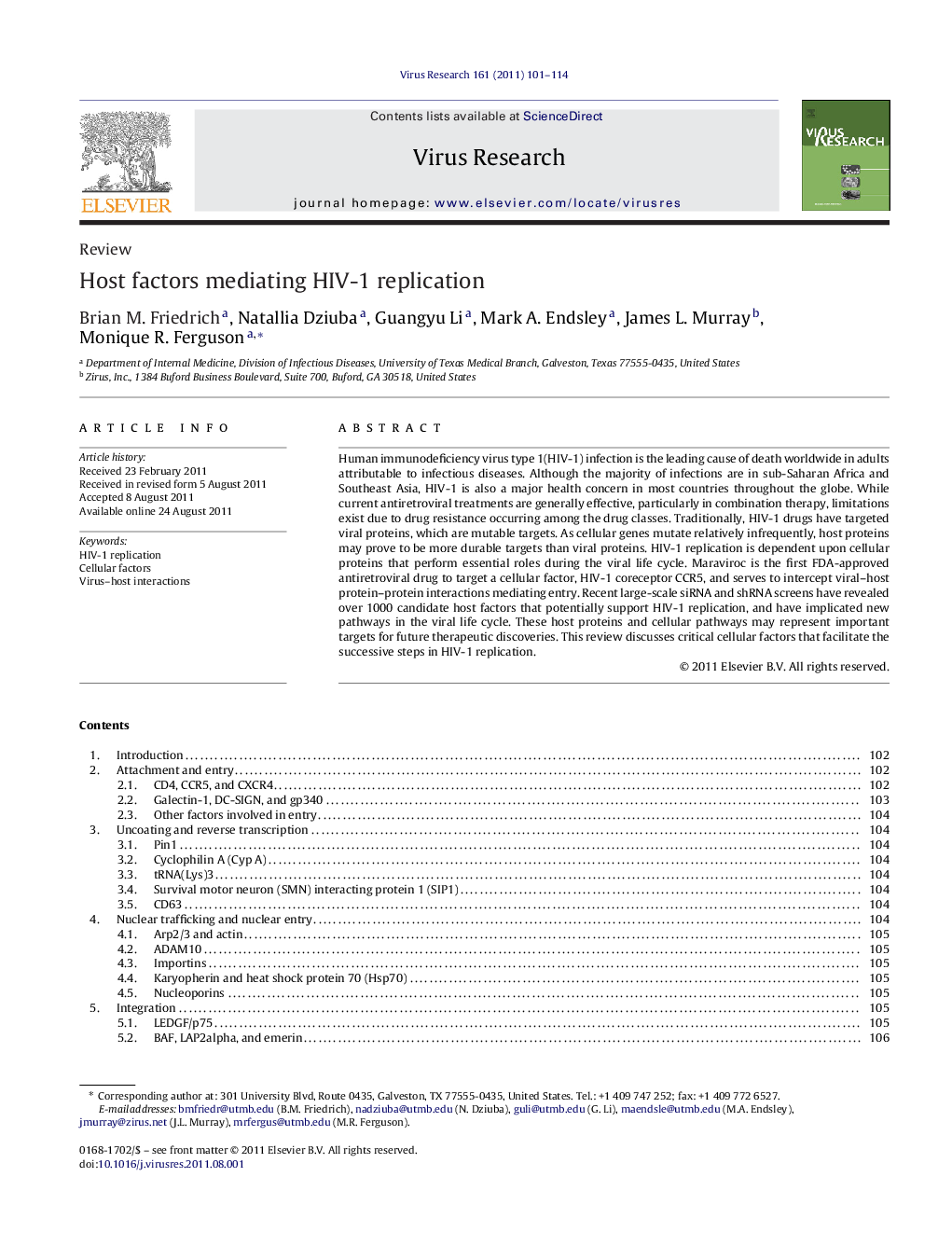| Article ID | Journal | Published Year | Pages | File Type |
|---|---|---|---|---|
| 3428841 | Virus Research | 2011 | 14 Pages |
Human immunodeficiency virus type 1(HIV-1) infection is the leading cause of death worldwide in adults attributable to infectious diseases. Although the majority of infections are in sub-Saharan Africa and Southeast Asia, HIV-1 is also a major health concern in most countries throughout the globe. While current antiretroviral treatments are generally effective, particularly in combination therapy, limitations exist due to drug resistance occurring among the drug classes. Traditionally, HIV-1 drugs have targeted viral proteins, which are mutable targets. As cellular genes mutate relatively infrequently, host proteins may prove to be more durable targets than viral proteins. HIV-1 replication is dependent upon cellular proteins that perform essential roles during the viral life cycle. Maraviroc is the first FDA-approved antiretroviral drug to target a cellular factor, HIV-1 coreceptor CCR5, and serves to intercept viral–host protein–protein interactions mediating entry. Recent large-scale siRNA and shRNA screens have revealed over 1000 candidate host factors that potentially support HIV-1 replication, and have implicated new pathways in the viral life cycle. These host proteins and cellular pathways may represent important targets for future therapeutic discoveries. This review discusses critical cellular factors that facilitate the successive steps in HIV-1 replication.
